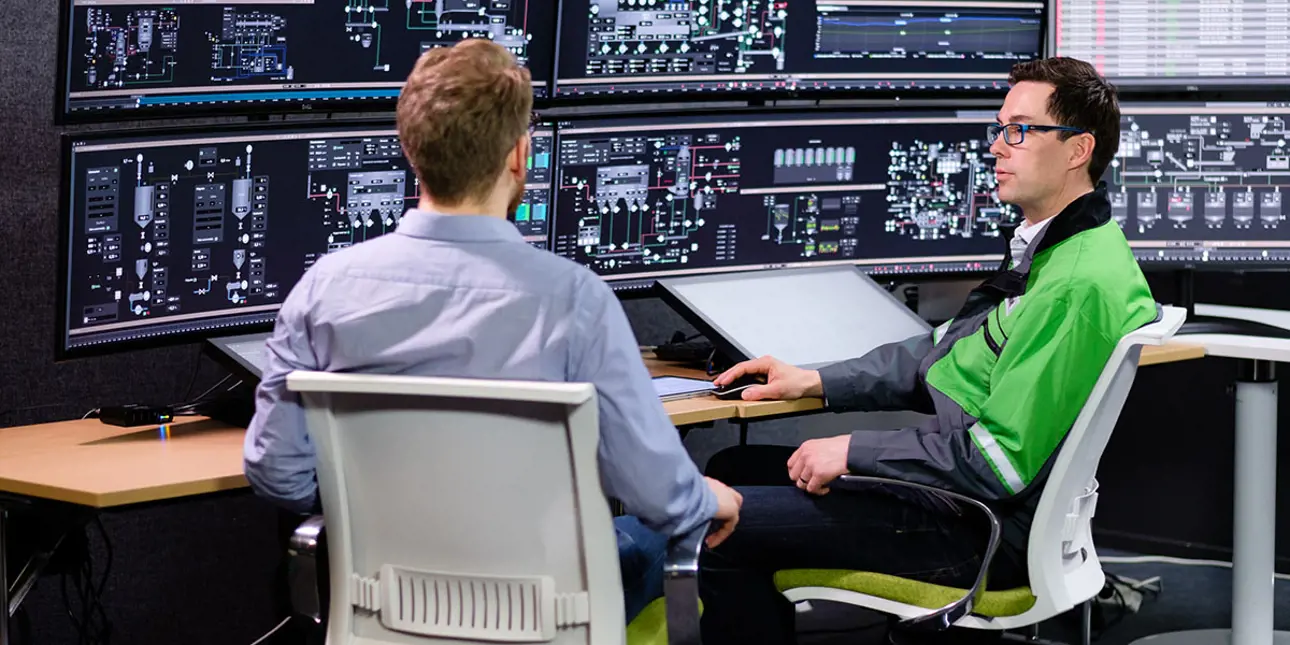Automation solutions implemented in the Sucuriú project
This year, Arauco announced the Sucuriú project – the world’s largest industrial facility ever built in a single phase, designed to produce 3.5 million tonnes of market pulp every year.

Valmet, a global leader in process technologies, automation, and services for the pulp, paper, and energy industries, will be the main technology partner and equipment supplier for the new mill, which will feature the highest levels of automation and digitalization in the industry.
The Finnish company was chosen as a key supplier because it offered a comprehensive and integrated portfolio with cutting-edge technologies and a broad installed base in the industry. In total, approximately 60,000 communication interface signals, 35,000 hard wired IOs, 30,000 meters of communication cables, 1,004 processing cores in servers organized in redundant clusters and a virtualized environment, and 323 automation cabinets will ensure the industrial facility’s connectivity.
"Valmet leads the way in promoting operations toward greater autonomy. Our solutions are developed based on a unique combination of process technology, services, and automation. The intelligence embedded in the equipment enables more predictable and autonomous operations, while data-driven services and the operational control system help optimize costs, quality, and productivity across the facility," explains Sérgio Bandeira Junior, Director of Automation Operations at Valmet.
With the construction of the new mill, Arauco is strengthening its presence in Brazil and reinforcing its leading position in the global market, as it is one of the industry leaders in production capacity. The mill will feature process controls and simulators for operational training. An integrated connectivity solution – from wood processing to pulp quality control – provides safety and process optimization, contributing to excellent resource efficiency.
"The inclusion of the asset management software – FDM (Field Device Manager) – integrated with DTM and later FDI will support appropriate decision-making, guided by Industry 4.0. It will also be supported by Valmet PlantTriage, a tool for control loop performance analysis, which will make it possible to conduct process correlation analyses," explains Leonardo Crociati, Arauco’s Executive Project Manager.
The virtualized Valmet DNAe automation system is one of the first to be implemented worldwide on a scale as large as the Arauco project, and it will integrate all the mill’s process data. The system provides unique data collection and utilization capabilities, enabling agile and accurate decision-making. It offers a solid platform for moving towards more digitalized and autonomous, fully web-based operations, consolidating a significant technological advantage. The common user interface for controls, analytics, configuration, and maintenance introduces one of Valmet’s latest innovations, the UX design concept, which, through detailed studies of the customer’s working methods and key objectives, aims to enable safer, more efficient, and more ergonomic operations, delivering a personalized experience for each role in the new team. The system architecture features cybersecurity by design, with role-based access control, authentication, encryption mechanisms, and auditing capabilities for proactive prevention of cyber threats.
Industrial Internet applications – also referred to as Industry 4.0 – will enable continuous adjustments to the production curve, supported by various analytical tools. Arauco’s new mill will feature a robust suite of these applications, including plant performance monitoring, analytical tools, troubleshooting analysis, mill balance, quality tracking across all process areas, and remote support from experts in other countries. All process units will be monitored and equipped with Advanced Process Controls (APCs), which can optimize production capacity by reducing operational variations – and therefore costs. In addition, the operation will be supported remotely by Valmet Performance Center experts around the world. Training simulators will also be used in 16 areas of the mill, accelerating team learning curves and contributing to safer and more precise operations. To anticipate different production situations, digital twins will enable the analysis of multiple scenarios, providing strategic support for decision-making.
The Valmet Mill-Wide Optimization (MWO) will be responsible for increasing the mill’s performance toward more autonomous operation. “The solution models the behavior and interactions between several processes, allowing the mill to be optimized as an integrated system to achieve a minimum cost per tonne of production. This orchestration also prevents underutilization of process areas, aligning them with the overall operational goals and ensuring maximum performance from each unit, while balancing environmental sustainability with production, quality, and cost,” adds Bandeira.
About the Sucuriú project
The Sucuriú project represents Arauco’s entry into the Brazilian pulp market. The US$ 4.6 billion investment includes the construction of a plant with a production capacity of 3.5 million tonnes of short-fiber pulp per year. It is located on a 3,500-hectare site, 50 kilometers from the center of the town of Inocência in the state of Mato Grosso do Sul (MS), and adjacent to the Sucuriú river. Earthworks began in 2024, and the plant is expected to start operations by the end of 2027.
At all stages of the project’s development, biodiversity will be continuously monitored and respected, with native flora and fauna species identified and priority conservation areas mapped.
During construction, Arauco will provide training and create more than 14,000 job opportunities. After start-up, the Sucuriú project is expected to employ around 6,000 people across the Industrial, Forestry, and Logistics operations. The aim is to drive social and economic development throughout the region, boosting income generation and tax revenues, as well as contributing to the attraction of further investment.
Related articles




